Outdoor fireplaces, with their captivating appeal, are becoming popular additions to homes, turning outdoor areas into inviting sanctuaries. For homeowners considering this attractive element, understanding the pros and cons of outdoor fireplaces is crucial to match their specific desires.
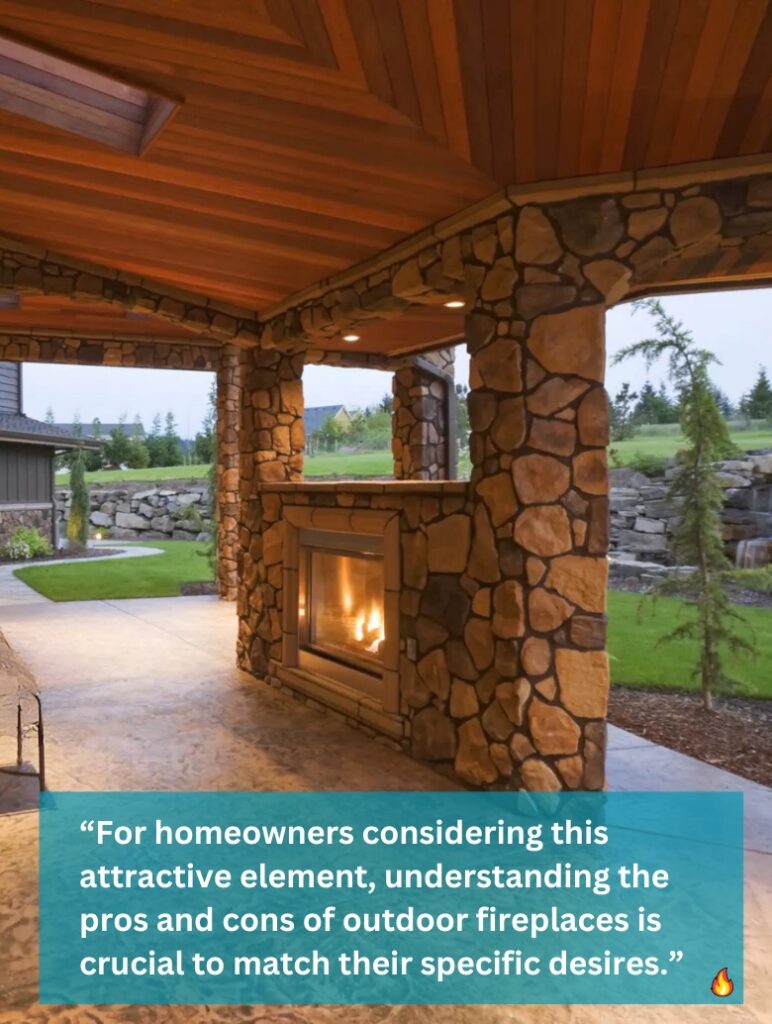
Our detailed guide highlights important considerations for those interested in adding an outdoor fireplace to their living space.
Pros of Outdoor Fireplaces
Outdoor fireplaces are a great addition to any outdoor living space and offer several benefits. Here are some of the pros of outdoor fireplaces.
——
Do You Need to Hire Chimney & Fireplace Expert?
Get free quotes from qualified experts near you. No commitment required!
——
Ambiance and Aesthetics
Remember the last time you sat by a fireplace, feeling the warmth and watching the flames dance? That’s the magic an outdoor fireplace brings.
They create a cozy atmosphere perfect for relaxing, entertaining, and spending time with loved ones. They also provide a stylish upgrade to your outdoor space, making it a place you’ll never want to leave. However, it’s important to understand the key differences between fireplaces and fire pits.
While an outdoor fireplace offers a more traditional, structured setting for warmth and ambiance, firepits provide a more open, communal experience. This distinction can greatly influence your choice depending on your space and entertainment needs.”
Outdoor Cooking
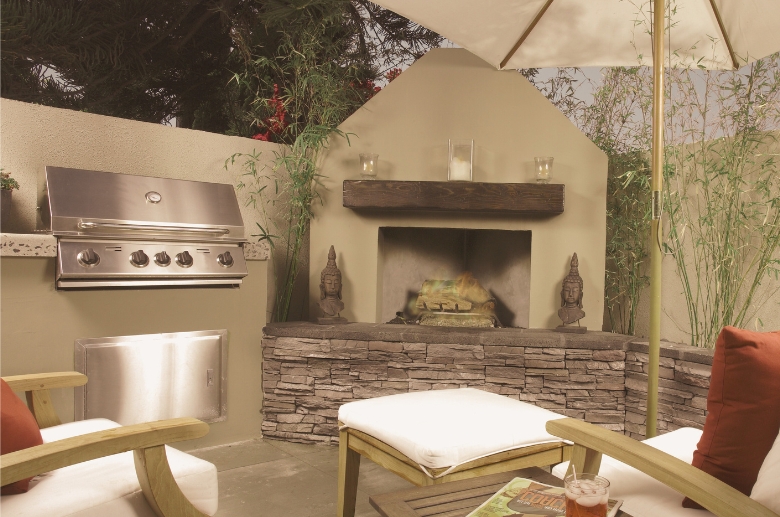
Now, imagine grilling your favorite meal under the open sky. Outdoor fireplaces are not just for show — they invite versatile outdoor cooking. It’s not just a fire. It’s a culinary adventure waiting to happen.
Increased Home Value
Let’s talk numbers, Fireplaces have a well-established track record of boosting home values. Surveys reveal that 70% of real estate agents view fireplaces as an important addition to property value.
Furthermore, 77% of potential homebuyers are open to paying a higher price for residences that feature a fireplace.
Research shows that homes with outdoor fireplaces can see a significant boost in value, as much as 15%. This addition is more than just about adding warmth. It represents a lucrative investment that yields returns at the time of sale. The backyard patio, featuring the fireplace, often becomes a key attraction for potential buyers.
Cons of Outdoor Fireplaces
While outdoor fireplaces enhance the aesthetic appeal of your backyard, certain drawbacks need consideration. Here are a few to note.
High Cost
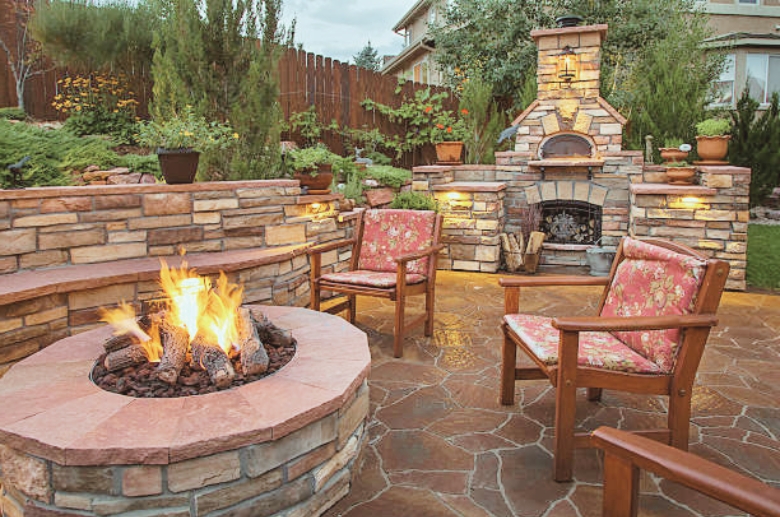
The initial investment for installing an outdoor fireplace could be substantial. Homeowners need to account for both the construction expenses and the ongoing maintenance costs. On average, the price for an outdoor fireplace is around $3,500, but depending on the specific design and installation requirements, this cost can vary significantly, ranging from $1,500 to $20,000.
Safety Concerns
While the warmth and glow of a fireplace are enticing, safety concerns should be a primary consideration. Outdoor fireplaces can pose safety risks, particularly when installation or usage is not done correctly.
Regular outdoor fireplace repair and maintenance are crucial to ensure they are operating safely and efficiently. Neglecting repairs can exacerbate these risks, making it vital to address any issues promptly.
The risk of fire hazards and potential health issues, especially with wood-burning fireplaces, requires careful consideration. They can be a hazard for children and pets if left unattended.
Exposure to wood smoke irritants can result in inflammation and pulmonary edema, characterized by the swelling of lung tissue. These irritants trigger allergic reactions and may contribute to long-term health effects.
——
Do You Need to Hire Chimney & Fireplace Expert?
Get free quotes from qualified experts near you. No commitment required!
——
Local Regulations
Before starting an outdoor fireplace project, you must be aware of local regulations. Certain regions may impose regulatory constraints regarding the dimensions or positioning of outdoor fireplaces.
Typically, it’s recommended that an outdoor fireplace be situated at a minimum distance of 10 feet from the house, property line, or any other surrounding fence or structure. However, local building codes may demand more extensive clearances and specify regulations concerning the chimney’s height.
Knowing and complying with these codes is crucial to ensure an outdoor fireplace’s safe and legal installation.
Types of Outdoor Fireplaces
Outdoor fireplaces come in various types, each with its own characteristics. Let’s explore the three primary types of outdoor fireplaces: wood-burning, gas, and ethanol.
Wood-Burning Fireplaces
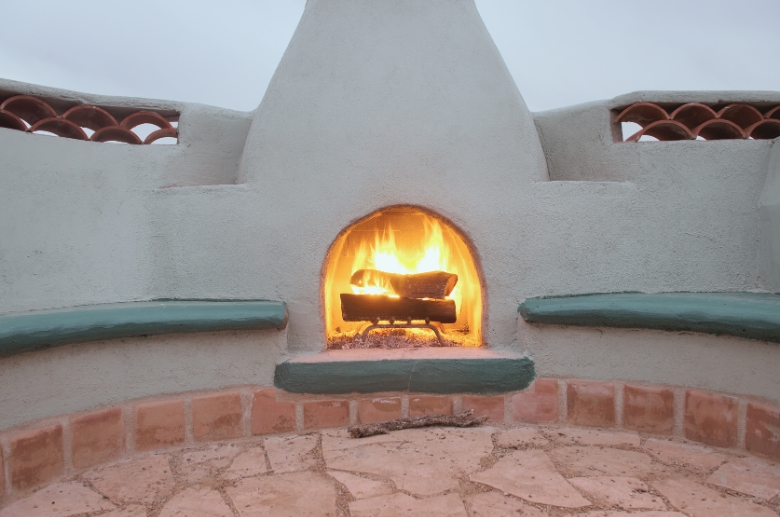
Wood-burning fireplaces exude a classic charm. Still, while the crackling flames create a nostalgic ambiance, the maintenance and safety risks associated with burning wood should be weighed carefully. Here are some pros and cons.
Pros:
- Authentic Atmosphere: Provides a traditional, crackling fire experience.
- Cost-Effective: Wood is often more affordable than other fuels.
Cons:
- Maintenance: Requires regular cleaning of ashes and chimney maintenance.
- Smoke Emissions: Can produce more smoke compared to other options.
Gas Fireplaces
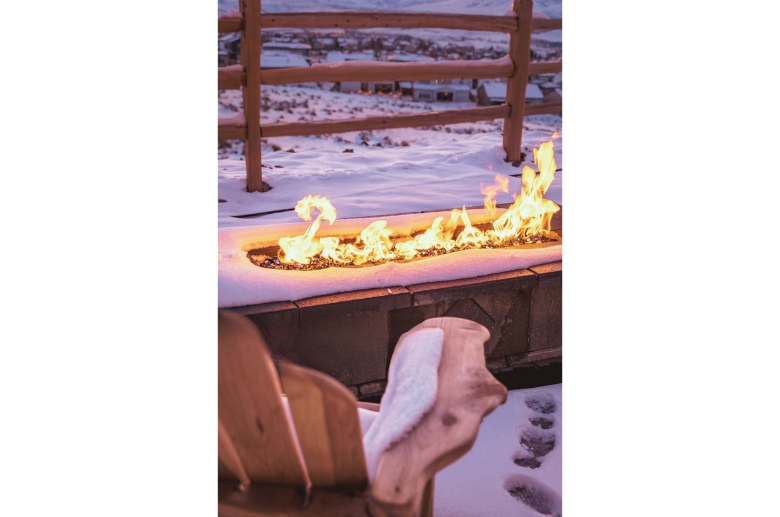
Efficient and convenient, gas fireplaces offer quick ignition and control. However, the installation cost and potential restrictions on gas availability are factors that homeowners should consider. Let’s examine their pros and cons.
Pros:
- Convenience: Easily ignited and controlled with a switch or remote.
- Clean Burning: Produces minimal smoke and ash.
Cons:
- Installation Cost: Initial setup costs can be higher.
- Dependency on Gas: Requires a stable gas supply.
Ethanol Fireplaces
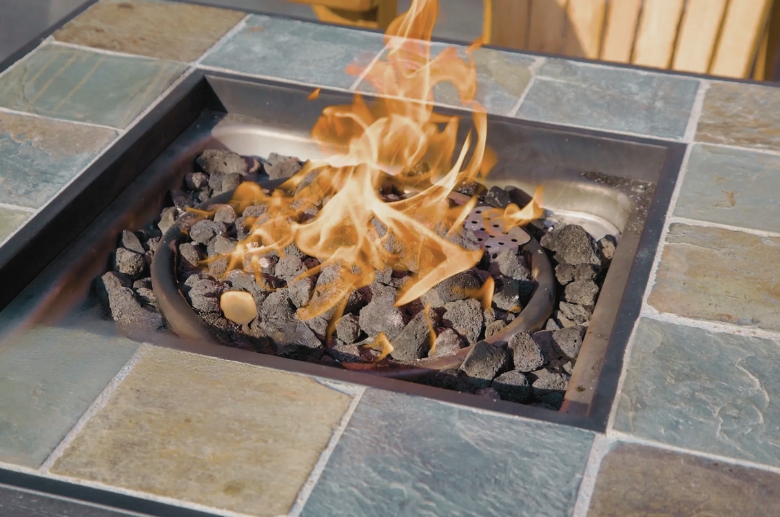
Ethanol fireplaces offer a clean alternative for those inclined towards an eco-friendly option. However, homeowners should be aware of lower flame intensity and ongoing fuel costs. Here’s a look at their pros and cons.
Pros:
- No Ventilation Needed: No need for a chimney or vent.
- Versatile Placement: This fireplace can be installed in various locations.
Cons:
- Heat Output: May provide less heat compared to other types.
- Fuel Availability: Ethanol might be less readily available in some areas.
Understanding the advantages and disadvantages of each type allows you to choose the outdoor fireplace that aligns with your preferences and safety considerations.
Outdoor Fireplace Designs and Styles
Regarding outdoor fireplaces, the design and style significantly enhance your outdoor living space. Let’s explore the diverse world of outdoor fireplace designs.
Traditional Outdoor Fireplace Designs
Traditional outdoor fireplaces often evoke a sense of warmth and familiarity. These designs typically incorporate classic materials like brick, stone, or stucco. The choice of materials contributes to the timeless appeal of traditional outdoor fireplaces.
These fireplaces may feature intricate masonry work, creating a rustic and charming atmosphere. One of the key features of traditional designs is their ability to seamlessly blend with various outdoor settings, making them a versatile choice for different home aesthetics.
Modern Outdoor Fireplace Designs
In contrast, modern outdoor fireplace designs embrace sleek lines, minimalism, and contemporary materials. Common materials used in modern designs include concrete, metal, and glass. The emphasis is on clean, geometric shapes that create a bold focal point in your outdoor space.
Modern outdoor fireplaces often come in various shapes and sizes, allowing customization to suit your preferences. The sleek design of modern fireplaces can complement a modern home or add a touch of sophistication to a more traditional setting.
You also have the flexibility to select from various modern features, including multiple opening heights, optional wall switches, and on/off switch choices.
Whether you prefer the timeless charm of traditional designs or the sleek aesthetics of modern styles, choosing the right outdoor fireplace design can elevate your outdoor living experience.
Consider your personal taste, the architectural style of your home, and the ambiance you want to create when selecting the perfect outdoor fireplace design.
Outdoor Fireplace Placement and Installation
When installing an outdoor fireplace, the process demands a certain level of expertise to ensure safety and functionality.
Choosing the Right Location for an Outdoor Fireplace
Choosing the right location for your outdoor fireplace is crucial for safety and enjoyment. Consider factors such as proximity to the house, property lines, and other structures.
Optimal placement ensures the fireplace is at least 10 feet away from these elements, following general guidelines. However, local code requirements may vary, so check regulations in your area.
Additionally, consider the prevailing wind direction to avoid blowing smoke towards your home. Optimal placement enhances safety, functionality, and the overall experience of your outdoor fireplace.
Outdoor Fireplace Installation
Once you’ve found the right placement, several important tips can guide the installation process:
- Site Selection: Carefully choose the location for your outdoor fireplace, considering safety, aesthetic appeal, and local regulations.
- Materials: Choose durable and weather-resistant materials to ensure the longevity of your outdoor fireplace.
- Permits: Check and obtain any necessary permits to avoid legal complications.
- Foundation: Ensure a stable foundation that can adequately support the weight of the fireplace.
- Ventilation: If the fireplace requires ventilation, ensure it meets safety standards to prevent any issues.
- Follow Instructions: Adhere closely to the manufacturer’s instructions for the specific fireplace model you are installing.
By prioritizing these considerations and following installation tips, you can rest assured that your outdoor fireplace will not only be a stylish addition to your outdoor living space but also a safe and well-installed feature.
——
Do You Need to Hire Chimney & Fireplace Expert?
Get free quotes from qualified experts near you. No commitment required!
——
Maintenance and Care for Outdoor Fireplaces
To ensure the optimal performance and longevity of your outdoor fireplace, regular maintenance and care are essential.
Cleaning and Maintenance of Outdoor Fireplaces
Routine cleaning is fundamental to maintaining your outdoor fireplace.
Regularly remove ash and debris from the firebox, as a buildup can impede proper airflow. Use a stiff brush to clean the exterior surfaces, and follow the manufacturer’s guidelines for cleaning specific materials.
For cleaning, here are things you can do on each use:
- Remove Ash Promptly: After each use, scoop out ash to prevent it from accumulating.
- Check for Debris: Regularly inspect the firebox and chimney for debris, bird nests, or other obstructions.
- Wipe Down Surfaces: Clean the exterior surfaces of the fireplace with a damp cloth to remove soot and stains.
For long-term maintenance, check out these tips.
- Off-Season Covering: If your outdoor fireplace won’t be used for an extended period, consider covering it to protect it from the elements.
- Inspect Chimney: Before the start of the burning season, have a professional inspect the chimney for any issues.
- Check for Wear: Examine components like the grate, doors, and handles for wear and tear, replacing damaged parts.
Safety Tips for Outdoor Fireplaces
Here are essential safety tips to follow when using an outdoor fireplace to ensure a secure and enjoyable experience:
- Maintain a clear space around the outdoor fireplace, keeping flammable materials like furniture, plants, or decorations at a safe distance.
- Ensure the fireplace is on a stable surface, away from overhanging branches or structures that could catch fire.
- Store fuels, such as wood, in a dry place away from the fireplace to reduce fire hazards.
- Never store fuel or kindling too close to the fire.
- Dispose of ashes in a metal container and ensure they are fully extinguished before disposal.
- Install a spark screen or protective barrier to prevent embers from escaping.
- Educate household members on basic fire safety, including the use of a fire extinguisher and emergency procedures.
Conclusion
The decision to add a fireplace to your backyard is significant, requiring thoughtful consideration of the pros and cons of outdoor fireplaces. By understanding the various types, designs, and safety considerations, you can make an informed choice that enhances the beauty and functionality of your outdoor living space.
If you’re considering this addition, take the next step and start exploring options, consult with professionals, and begin shaping your outdoor haven.






